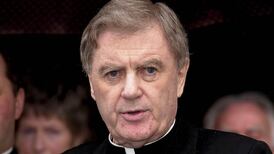Michael English:THE 1960s was when ephemera became non-ephemeral. Instead, they have gained quasi-immortality in the salerooms and on eBay – among them the early work of artist Michael English, who has died aged 68 after five years of suffering from bone marrow cancer.
English’s epiphany came in December 1966 when he chanced upon graphic artist Nigel Waymouth painting the facade of Granny Takes a Trip, London’s first psychedelic boutique.
Together they created a graphics team doubling up as rock group Hapshash and the Coloured Coat. This kind of music and pop art seemed natural bedfellows; both emerged from the art schools of the time.
English studied at Ealing art school in west London, and developed into a prolific producer of pop art – a potent mix of art nouveau with hard-edge sci-fi applied to disposable items such as union flag sunglasses, T-shirts, carrier bags, and graphics for the underground paper International Times.
Most of all there were the posters, for the UFO (Unlimited Freak Out) club on Tottenham Court Road, for Pink Floyd and Jimi Hendrix, a glorious sunburst for a Hapshash album sleeve, and a sensual, vermilion mouth with gleaming teeth spilling out tendrils blossoming into fat letters spelling out “Love festival”.
English was born in Oxfordshire but, like many children in service families, was constantly on the move. His early education was at a series of boarding schools.
After the second World War his father left the RAF and worked for electrical engineering firm Ferranti. This may have rubbed off on his son, because when English tired of the 1960s scene after the flop of a Hapshash gig in 1968, he worked his way through to an unabashed style of hyper-real art celebrating the triumph of commerce.
The lips of the love festival poster mutated into lips blowing a globe of bubblegum or viscously spilling syrup. The fascination with surfaces produced possibly the best known of his pieces, the Coke bottle cap of 1970, bent and splashed with liquid. The same year saw a crushed can of tomato juice spilling thick liquid, and a toothpaste tube oozing paste.
He moved on to industrial hardware, objectified like sexual fetishes: a wheel and pistons of a railway engine, an aircraft jet fan, a truck’s diesel filling cap, a smashed bottle lying on a bed of moss. In these, the paint surfaces, the hints of rust, the edge of broken glass, appear with a heightened fidelity that made him the must-hit target for advertising agencies. And so English loaned his talents to marketing the products of companies such as Bertolli, Swiss Air, BA and Porsche.
All along he yearned to go straight, to paint like a “real” artist. He went to the Seychelles for subject matter and came back, of course, with hyper-real natural imagery. He painted it proficiently but his real talent lay in romanticising the chill seductiveness of the machine age.
His wife, Jaki, survives him.
Michael English: born September 5th, 1941; died September 25th, 2009









